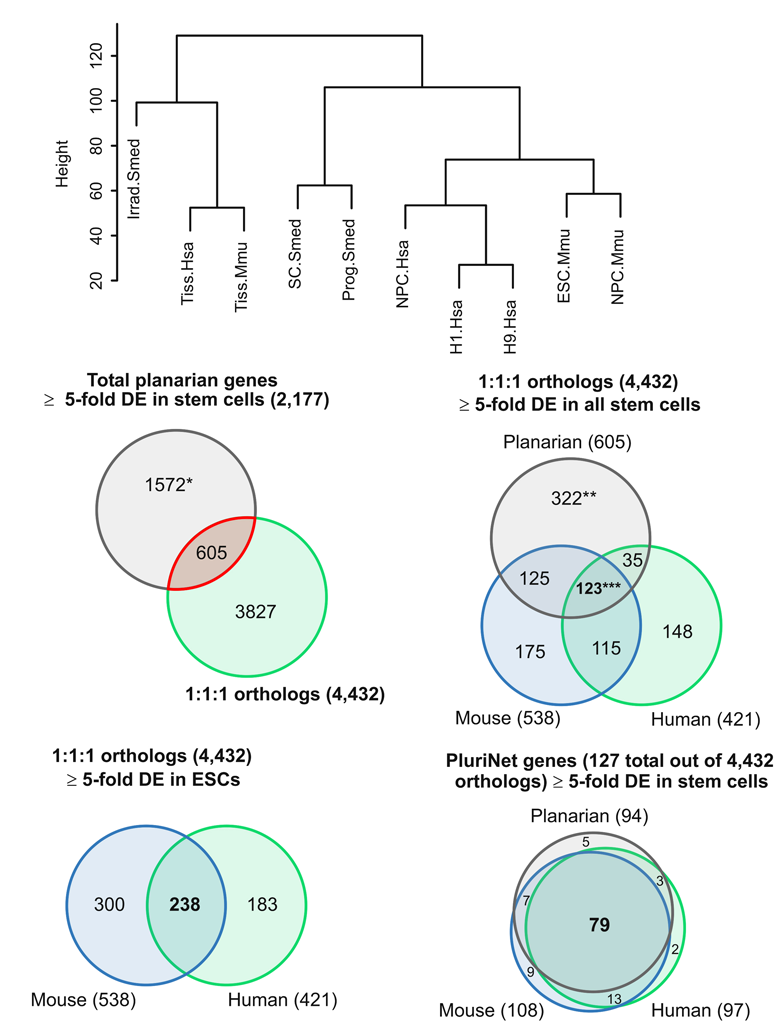Conservation of pluripotency
Pluripotency is a rare property of stem cells whereby they have the potential to make any differentiated cell types in the organism. Fortunately, planarian adult stem cells have this property. We hypothesized that because mammalian embryonic stem cells and planarian adult stem cells have the biology of pluripotency, they may also share common genetic programs. We took the following comparative genomic approach to show that this is indeed the case.



